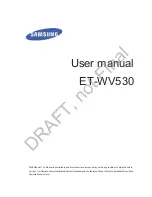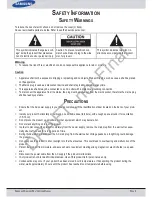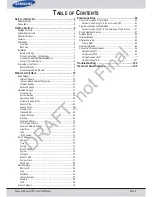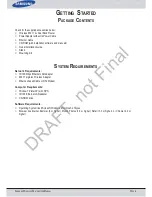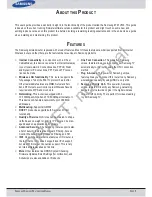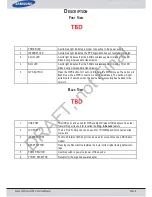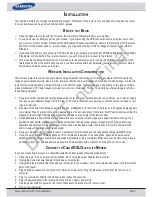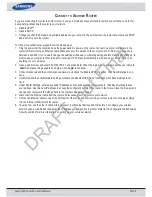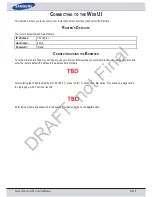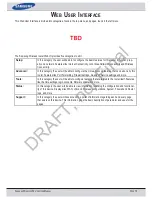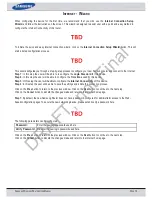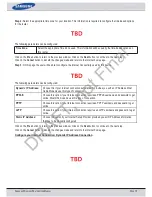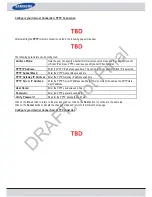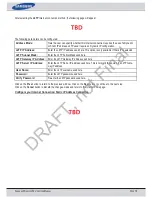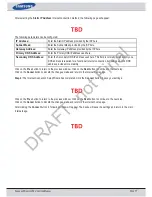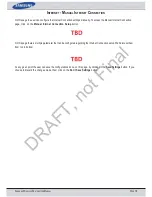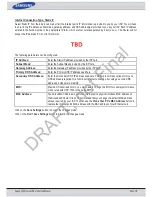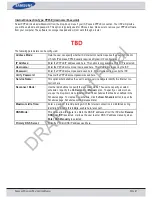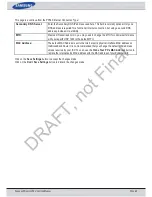
S
AMSUNG
W
IRELESS
R
OUTER
U
SER
M
ANUAL
P
AGE
7
I
NSTALLATION
This section will walk you through the installation process. Placement of the router is very important. Do not place the router
in an enclosed area such as a closet, cabinet, attic or garage.
B
EFORE YOU
B
EGIN
• Please configure the router with the computer that was last connected directly to your modem.
• You can only use the Ethernet port on your modem. If you were using the USB connection before using the router, then
you must turn off your modem, disconnect the USB cable and connect an Ethernet cable to the Internet port on the router,
and then turn the modem back on. In some cases, you may need to call your ISP to change connection types (USB to
Ethernet).
• If you have DSL and are connecting via PPPoE, make sure you disable or uninstall any PPPoE software such as WinPoet,
Broadjump, or Enternet 300 from your computer or you will not be able to connect to the Internet.
• When running the Setup Wizard from the CD, make sure the computer you are running the CD from is connected to the
Internet and online or the wizard will not work. If you have disconnected any hardware, reconnect your computer back to
the modem and make sure you are online.
W
IRELESS
I
NSTALLATION
C
ONSIDERATIONS
The wireless router lets you access your network using a wireless connection from virtually anywhere within the operating
range of your wireless network. Keep in mind, however, that the number, thickness and location of walls, ceilings, or other ob-
jects that the wireless signals must pass through, may limit the range. Typical ranges vary depending on the types of materi-
als and background RF (radio frequency) noise in your home or business. The key to maximizing wireless range is to follow
these basic guidelines:
1. Keep the number of walls and ceilings between the router and other network devices to a minimum - each wall or ceiling
can reduce your adapter’s range from 3-90 feet (1-30 meters.) Position your devices so that the number of walls or ceil-
ings is minimized.
2. Be aware of the direct line between network devices. A wall that is 1.5 feet thick (.5 meters), at a 45-degree angle appears
to be almost 3 feet (1 meter) thick. At a 2-degree angle it looks over 42 feet (14 meters) thick! Position devices so that the
signal will travel straight through a wall or ceiling (instead of at an angle) for better reception.
3. Building Materials make a difference. A solid metal door or aluminum studs may have a negative effect on range. Try to
position access points, wireless routers, and computers so that the signal passes through drywall or open doorways.
Materials and objects such as glass, steel, metal, walls with insulation, water (fish tanks), mirrors, file cabinets, brick,
and concrete will degrade your wireless signal.
4. Keep your product away (at least 3-6 feet or 1-2 meters) from electrical devices or appliances that generate RF noise.
5. If you are using 2.4GHz cordless phones or X-10 (wireless products such as ceiling fans, lights, and home security
systems), your wireless connection may degrade dramatically or drop completely. Make sure your 2.4GHz phone base is
as far away from your wireless devices as possible. The base transmits a signal even if the phone in not in use.
C
ONNECT TO
C
ABLE
/DSL/S
ATELLITE
M
ODEM
If you are connecting the router to a cable/DSL/satellite modem, please follow the steps below:
1. Place the router in an open and central location. Do not plug the power adapter into the router.
2. Unplug the modem’s power adapter. Shut down your computer.
3. Unplug the Ethernet cable (that connects your computer to your modem) from your computer and place it into the Internet
port on the router.
4. Plug an Ethernet cable into one of the four LAN ports on the router. Plug the other end into the Ethernet port on your
computer.
5. Plug in your modem. Wait for the modem to boot (about 30 seconds).
6. Plug the power adapter to the router and connect to an outlet or power strip.
7. Use the power switch to power on the router. Wait about 30 seconds for the router to boot.
8. Turn on your computer.
DRAFT, not Final

